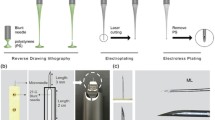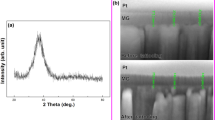Abstract
The study developed two models of an innovative high-speed lancing device and safety lancet, where the specially designed structure causes high-speed motion of the lancet, resulting in only one puncture of the skin. The two experimental models and other lancing devices sold on market were compared in order to: (1) measure the forces of lancets piercing animal skin by a load cell; (2) observe the wound areas caused by lancing devices under a microscope. The experimental results showed that, after using this innovative high-speed lancing device, the maximum force of a lancet piercing skin is only 1/3 of the force of conventional lancing devices, and the duration of the former under the skin is 1/6 of the latter. In addition, the wound area caused by the innovative lancing device is 20 % smaller than those of the conventional lancing devices. Usage of this innovative high-speed safety lancet shows that its maximum skin-piercing force is only 2/3 of conventional safety lancets, its duration under the skin is 1/4 of conventional safety lancets, and the wound area is 12 % smaller. In conclusion, both the innovative high-speed lancing device and safety lancet are proved effective in alleviating pain for diabetics and shortening the recovering time for wounds, thus, providing a more comfortable process for the self-monitoring of blood glucose.










Similar content being viewed by others
References
Ruan T, Hoover S (2014) Lancing device. US Patent 20140107689A1
Colonna R, Taylor T (2014) Finger activated lancet device. US Patent 8840633B2
Yang MW, Hsu MC, Lin YH, Wang JP, Shen TY (2008) Safety lancet. Europe Patent 1917910A2
Steg H (2007) Lancet device for puncturing the skin. US Patent 20070244498A1
Mawhirt JA, Kuklo AF, Foggia D, Allen DW (1998) Low cost disposable lancet. US Patent 5851215A
Clarke SF, Foster JR (2012) A history of blood glucose meters and their role in self-monitoring of diabetes mellitus. Br J Biomed Sci 69(2):83–93
Kuhr HJ, Forster R (2008) Device for withdrawing blood for diagnostic applications. US Patent 7322998 B2
Wiegel C (2012) Safety lancet. US Patent 20120116436A1
Dubois W. (2014). Blood glucose self-monitoring: Part 2. Published Aug 21
Klonoff DC (2011) Improving the safety of blood glucose monitoring. J Diabetes Sci Technol 5(6):1307–1311
Heinemann L (2008) Finger pricking and pain: a never ending story. J Diabetes Sci Technol 2(5):919–921
Heinemann L, Boecker D (2011) Lancing: quo vadis? J Diabetes Sci Technol 5(4):966–981
Robert U (2009) Lancing device with dampener. Europe Patent 1810616 B1
Prais E, Sams RS, Yao S. (2014) Lancing device. US Patent 20140276221 A1
Ruan T, Hoover S. (2014) Lancing device. US Patent 20140107689 A1
Fruhstorfer H, Schmelzeisen-Redeker G, Weiss T (1999) Capillary blood sampling: relation between lancet diameter, lancing pain and blood volume. Eur J Pain 3:283–286
Arendt-Nielsen L, Egekvist H, Bjerring P (2006) Pain following controlled cutaneous insertion of needles with different diameters. Somatosens Mot Res 23(1–2):37–43
Shi G (2008) Safety single use blood lancet device with adjustable puncture depth. US Patent 20080039886 A1
Wang Y, Chen RK, Tai BL, McLaughlin PW, Shih AJ (2014) Optimal needle design for minimal insertion force and bevel length. Med Eng Phys 36:1093–1100
Wang Y, Tai BL, Chen RK, Shih AJ (2013) The needle with lancet point: geometry for needle tip grinding and tissue insertion force. J Manuf Sci Eng 135:4
Flora BA, Ruggiero JE (2007) Multiple tip lancet. Europe Patent 1771112 A2
Kocher S, Tshiang-Tshiananga JK, Koubek R (2009) Comparison of lancing devices for self-monitoring of blood glucose regarding lancing pain. J Diabetes Sci Technol 3(5):1136–1143
Ginsberg BH, Shemain A, Pynes MK, Wallace DA, Pineau M (2011) Evaluating the OneTouch® Delica™: a low-pain lancing system for self-monitoring of blood glucose. Postgrad Med J 123:92–98
Chang H, Yeh YJ, Lee R, Lee CC, Shyu JH (2016) Characterization and clinical trial of an innovative high-speed lancing device. Appl Sci 6:111
Acknowledgments
The authors would like to thank the Ministry of Science and Technology of the Republic of China, Taiwan, for financially supporting this research under Contract No. NSC 102-2221-E-027-012.
Author contributions
Yao-Jen Yeh is a consultant for, and carried out the experiments in this research. Ho Chang is the main author of the manuscript and advised on the experiments. Rahnfong Lee and Jenq-Huey Shyu conceived and designed the simulation.
Author information
Authors and Affiliations
Corresponding author
Ethics declarations
Conflict of interest
The authors declare that they have no conflict of interest.
Rights and permissions
About this article
Cite this article
Chang, H., Yeh, YJ., Lee, R. et al. A feature study of innovative high-speed lancing device and safety lancet. Australas Phys Eng Sci Med 39, 895–902 (2016). https://doi.org/10.1007/s13246-016-0490-6
Received:
Accepted:
Published:
Issue Date:
DOI: https://doi.org/10.1007/s13246-016-0490-6




